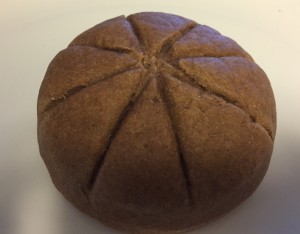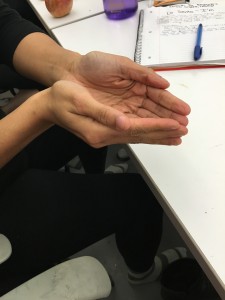Electric Bicycles
When we talk about bicycles we usually imagine a network of metal rods, pedals, and wheels that someone drives along with their own leg strength. But, you would be surprised to know that there’s actually a whole world of bicycles out there that most people know little about! When you say “electric bicycle” people usually imagine a motorized scooter or even a motorcycle, but in reality electric bicycles are nowhere near close to that image. Most electric bicycles are simply standard bicycles equipped with a variety of electric components that are arranged in sync with the design. They are equipped with a battery, a motor, and a controller to charge the battery. The motorized components are not meant to replace human power, but instead they work with it to augment the total speed and power of the bike (EVELO, 2016). That means, you still have to pedal on an electric bike and steer like you would on any other bike. The oldest patent for an electric bike is by Ogden Bolton, Jr. of Canton, Ohio, which was filed in September 1895 and granted three months later (EVELO, 2016).
You might be wondering why anyone would need an electric bike to begin with. Why not just get a regular bicycle like everyone else and save the money? For some people, like the elderly or persons with disabilities, electric bicycles present an opportunity to use the standard mechanism of a bicycle without the entire physical strain of a normal, non-electric bicycle (Woodford, 2015). Plus, you can travel a lot farther without getting as tired as you would on a regular bike and it makes obstacles like hills a lot easier to manage. They also present a lot of additional conveniences than a regular bike—like faster speed—with the same economy and overall environmental-friendliness.
Electric bicycles have three main parts to them: a battery, a frame, and a motor (Woodford, 2015). The battery contains all the power that will drive the bike along. In theory, you could use any kind of battery on a bicycle. But, in reality, you want to use a battery that stores a lot of power without being too heavy or bulky. Otherwise, you’ll be wasting all your power just trying to drag the weight of the battery. A standard electric bike battery makes about 350–500 watts of power, which is about a quarter as much as you need to power a toaster (which doesn’t really help me understand any better how much power that actually is…) (Woodford, 2015). Lightweight lithium-ion batteries, similar to those used in laptops and cellphones are now the most popular choice—granted they’re pretty pricey. A standard battery provides you with a range of 10–40 miles between charges (depending on the terrain) and a top speed of 10–20 mph. Although you can extend the range by simply pedaling more or free-wheeling along. You can typically tell an electric bicycle by its somewhat obvious battery pack mounted on the main frame (Woodford, 2015) (EVELO, 2016).
The next part of the electric bicycle is the frame. Electric bikes have a different frame than those of regular bicycles. The main part of the frame, which supports the majority of your weight, is made from lightweight aluminum alloy. The golden rule for electric bike frames is this: The lighter the frame, the lighter the weight of the bike overall. And the lighter the bike is, the longer you can travel without having to charge the battery. The battery that powers the electric bike is usually placed somewhere on the main frame to help balance the overall weight of the bike (Woodford, 2015).
The last part of the bicycle is the motor. The two kinds of motors are full-power motors and power-assist motors. Full-power motors are designed to reduce the amount of pedaling you do over a shorter amount of distance. They have large batteries and powerful motors, but also, as a result, tend to be bigger and heavier. Since the battery is engaged at all times and you provide no pedaling power, the range is limited to around 10–20 miles (Woodford, 2015). Power-assist motors (also known as pedal-assist motors) are the equivalent to hybrid cars. They are meant to be pedaled by you for the most part and are only really electrically-powered if you are too tired or if you are facing a big obstacle like a hill. Unlike full-power bikes, they don’t have a hub motor. Instead, there’s a separate motor mounted near the rear wheel that is significantly less bulky and lighter than a hub motor. Power-assist motors turn easily with little to no resistance when you pedal because the bicycle does not have a large hub motor dragging it down with its weight. They also have a much greater range than full-power motors going from 50–90 miles (Woodford, 2015) (EVELO, 2016).
Electric cars are certainly better than regular old cars, but they also aren’t the best thing out there when it comes to environmentally-friendly types of transportation. For one, batteries are a major source of pollution across the world. Their production and disposal leak harmful contaminants and chemicals into the environment. An electric bicycle also has to be charged using electricity that could have been produced in any number of environmentally-harmful ways. Electric bikes are certainly not better than regular, standard bikes because they require the production and use of potentially-unclean energy to run. But, if everyone used an electric bike instead of a car, pollution would be significantly less than its current state (Woodford, 2015).
In conclusion, electric bicycles are a relatively unknown part of the bicycle world. They consist of a battery, a frame, and a motor. Running on the power of a battery, electric bicycles allow you to travel faster than you could on a regular bicycle. They also present a good alternative for bicycle-riding for the elderly or persons with disabilities. While they present a good alternative, electric bicycles can also be potentially harmful for the environment. Because of the production and use of a battery and the need for electricity, electric bicycles can contribute to dangerous pollution across the world.
Works Cited
EVELO. “Electric BIkes 101 – Electric Bicycles: What They Are & How They Work.” EVELO Electric Bicycles. Web. 17 Feb. 2016. <http://www.evelo.com/electric-bikes-101/>.
Tyley, Jodie. “How Do Electric Bikes Work?” How It Works Magazine. 19 July 2011. Web. 17 Feb. 2016. <http://www.howitworksdaily.com/how-do-electric-bikes-work/>.
Woodford, Chris. “Electric Bicycles.” ExplainThatStuff. 16 Oct. 2015. Web. 17 Feb. 2016. <http://www.explainthatstuff.com/electricbikes.html>
Cool Link #1
Cool Link #2
Cool Link #3

 *all aboard the party express*
*all aboard the party express*













